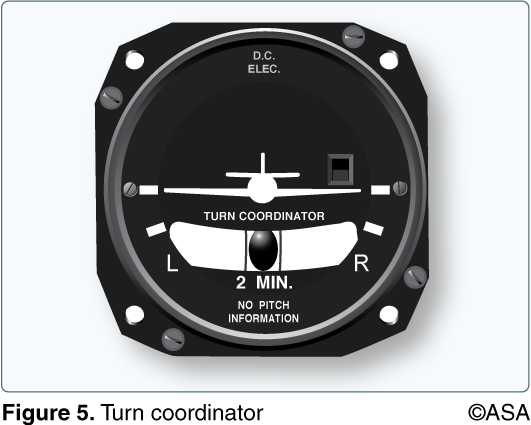Monday’s post gave us an introduction into the world of gyroscopic flight instruments and as we learned these include the attitude indicator, turn coordinator, and heading indicator also referred to as the directional gyro. Each one of these gyroscopic flight instruments functions based off the principle of rigidity in space. To put it more simply gyroscopes are rapidly spinning wheels or disks which resist any attempt to move them from their plane of rotation. Let’s take a moment to expand just a bit on each of the three instruments.
Attitude Indicator
The rigidity in space principle makes the gyroscope an excellent “artificial horizon” around which the attitude indicator (and the airplane) pivot.
When viewing the attitude indicator, the direction of bank is determined by the relationship of the miniature airplane to the horizon bar. The miniature airplane may be moved up or down from the horizon with an adjustment knob. Normally, the miniature airplane will be adjusted so that the wings overlap the horizon bar whenever the airplane is in straight-and-level flight.
Turn Coordinator
The turn coordinator (also using the principle of the gyroscope) uses a miniature airplane to provide information concerning rate of roll and rate of turn. As the airplane enters a turn, movement of the miniature aircraft indicates rate of roll. When the bank is held constant, rate of turn is indicated. Simultaneously, the quality of turn, or movement about the yaw axis, is indicated by the ball of the inclinometer.
Heading Indicator
The heading indicator is a gyroscopic instrument designed to avoid many of the errors inherent in a magnetic compass. However, the heading indicator does suffer from precession, caused mainly by bearing friction. Because of this precessional error, the heading indicator must periodically be realigned with the magnetic compass during straight-and-level, unaccelerated flight.
Below I have included some questions as they relate to gyroscopic flight instruments, these are very similar to what you can expect to see on your private pilot knowledge exam as well as your instrument rating knowledge exam. I will go ahead and post the answers in the comments section Monday.
1. One characteristic that a properly functioning gyro depends upon for operation is the
A—ability to resist precession 90° to any applied force.
B—resistance to deflection of the spinning wheel or disc.
C—deflecting force developed from the angular velocity of the spinning wheel.
2. (Refer to Figure 5.) A turn coordinator provides an indication of the
A—movement of the aircraft about the yaw and roll axis.
B—angle of bank up to but not exceeding 30°.
C—attitude of the aircraft with reference to the longitudinal axis.





